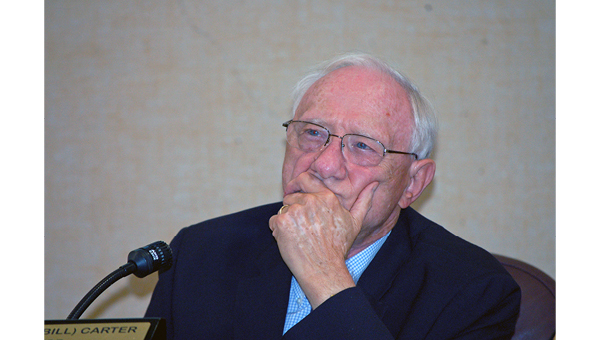City officials hold workshop on sign ordinance changes
Published 9:09 am Tuesday, December 1, 2015

In the second sign ordinance workshop with Planning Commission members and City Councilmen Monday, the majority of the discussion focussed on the allowance and regulation of temporary off-premise signs.
The existing ordinance does not allow temporary off-premise signs, so the proposed addition of these to the ordinance raised a number of issues and questions.
The majority of commissioners agreed to allow one off premise sign per property or per storefront, whichever is fewer, for a limit of 90 days. If used set out for 90 days, the property must not have one of the same type of sign out for a 30 day period, however, the property may have one of each type of sign, including banners, snipe signs, vertical flag signs, and others at any given time.
This would include temporary signs like Betsy Band signs, advertising special signs, Josh Wandell signs, basketball sign-up signs, United Way signs, vacation bible school signs and a number of others that residents see displayed.
It would not regulate political, real estate (including auction and directionals), residential yard signs or inflatables under four cubic feet. Residential yard signs would be required to be limited to one per yard.
The property owner would be required to apply for a $10 permit per sign.
One major difference in the proposed and current ordinances is the lack of regulation of content in the proposed ordinance. Commissioner Melanie Sellers said they cannot make separate regulations for businesses, churches, schools and non-profits.
“With the new regulations, every property has rights to a certain number of signs regardless of what those signs say. We regulate the time, design and location,” said City Director of Planning and Development Jon Hartman.
An example cited was Highland Fellowship’s numerous snipe signs. Hartman said that they would be allowed to have one sign on each property, with property owner approval and payment of $10 for each sign.
Sellers pointed out that while $10 is affordable, it self-regulates excessive display of signs.
They discussed the use of stickers on each permitted sign to simplify enforcement, similarly to the use of annual stickers on vehicle license plates. Commissioners made no decision to add this to the proposal.
Commissioner Dena Bass raised the issue of whether a property owner wanted to have two signs from other organizations or companies, to which Sellers responded the property owner would have to decide.
Commissioners agreed to disallow signs within the right of way regardless of the content, as these are a liability issue and a mowing obstruction.
The only location that would allow a sign in the right of way would be in the corner of an intersection, but those signs will be required to be shorter than 18 inches or taller than eight feet, allowing visibility for drivers.
The proposed sign ordinance will have the discussed amendments made, and then it must pass approval by the Planning Commission and the City Council, which Hartman said may be February at the earliest.





